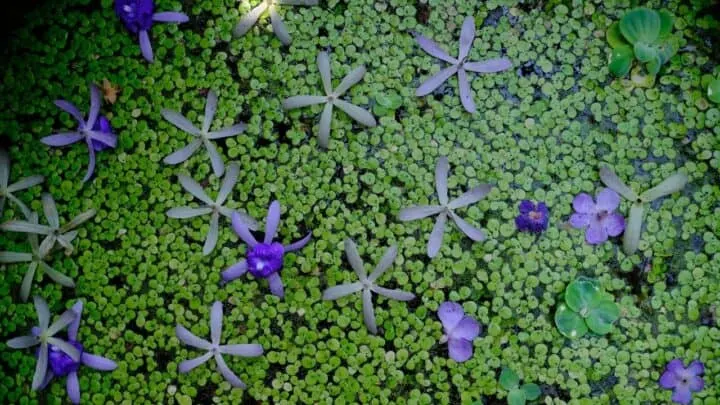Flowering aquatic plants are the best way to add a vibrant, natural look to your tank.
Apart from creating a visually appealing look, aquarium plants also provide several health benefits for our marine friends, including oxygen provision and pH stabilization.
With their various colors, sizes, and shapes, tank plants enhance the look of all aquariums.
While some may think there is a very limited number of aquarium floral plants, the truth is that plenty of plants now grow better underwater instead of on the ground.
Some produce small, bright flowers, while others grow relatively large, dark blooms. However, both make wonderful displays.
Today I’ll share with you some gorgeous flowering aquarium plants that you can easily grow in your tank.
Apart from their brief details, you will also find some tips and tricks that will make the development process a lot simpler.
Table of Contents
Flowering Aquarium Plants
The most popular aquarium flora plants include Anubias, Amazon Sword Plant, Banana Plant, Bucephalandra, Cryptocoryne, Cabomba, Aponogeton, Red Tiger Lotus, and Giant Hygrophila. They need low to moderate light and frequent feeding with good quality fertilizers to reach optimal sizes and grow attractive flowers.
9 Beautiful Flowering Aquarium Plants
Anubias
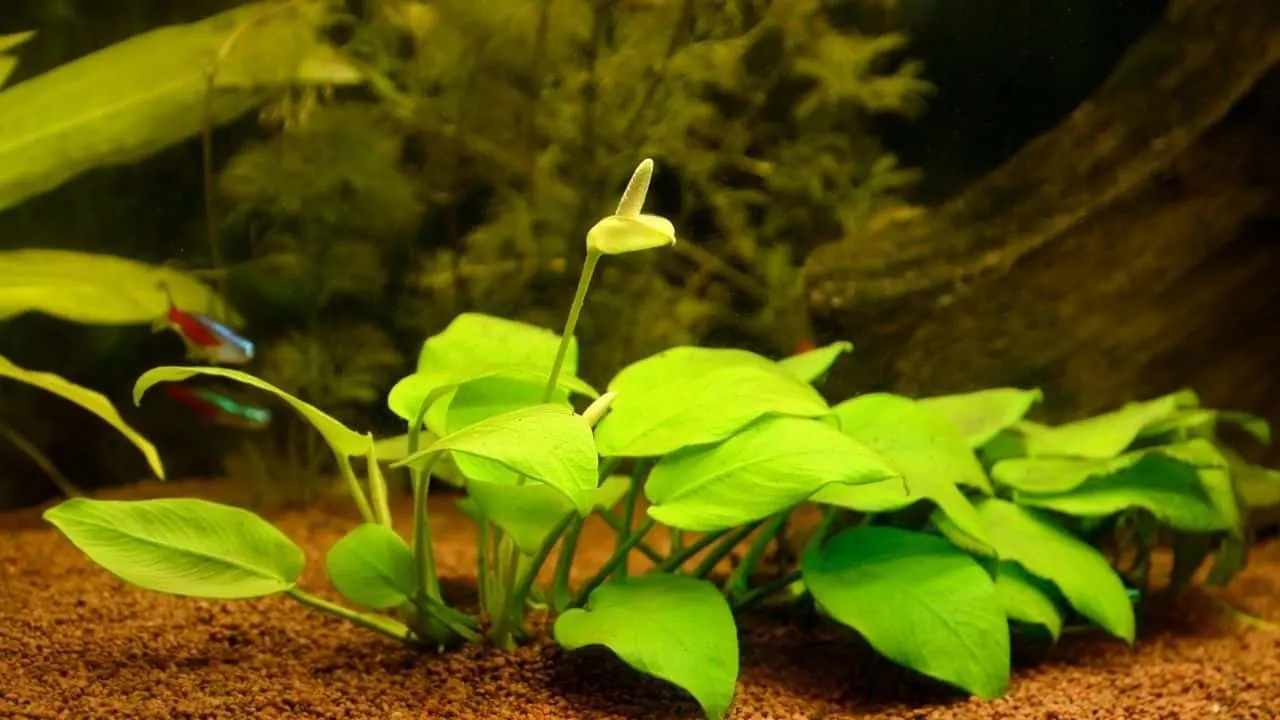
If you are new to growing aquarium plants and wish to grow easy floras, the Anubias plants are a great choice. Scientifically known as Anubias Sp., they arise from West Africa.
These beauties must be grown in low lights as they have highly light-sensitive leaves. Requiring low nutrition, these plants grow to about 2 to 12 inches (5 to 30 cm) when fully mature.
They’re easy to take care as they don’t require too much carbon dioxide or fertilization.
You don’t even need to worry about planting them in fancy, decorative pots because they are epiphytes, which grow attached to tough surfaces, such as driftwood and rock.
The Anubia flowers are interesting, to say the least, with a thick central spadix concealed by tiny flowers.
A single white leaf resembling a petal surrounds the spadix. The Anubia plants are one of the few aquatic floras that produce blooms when entirely submerged in water.
- Scientific name: Anubias Sp
- Common name: Anubias
- Light requirements: low light
- Nutrition: low
- Growth rate: slow to moderate
- Care: easy
- Carbon dioxide supplements: optional
Amazon Sword Plant
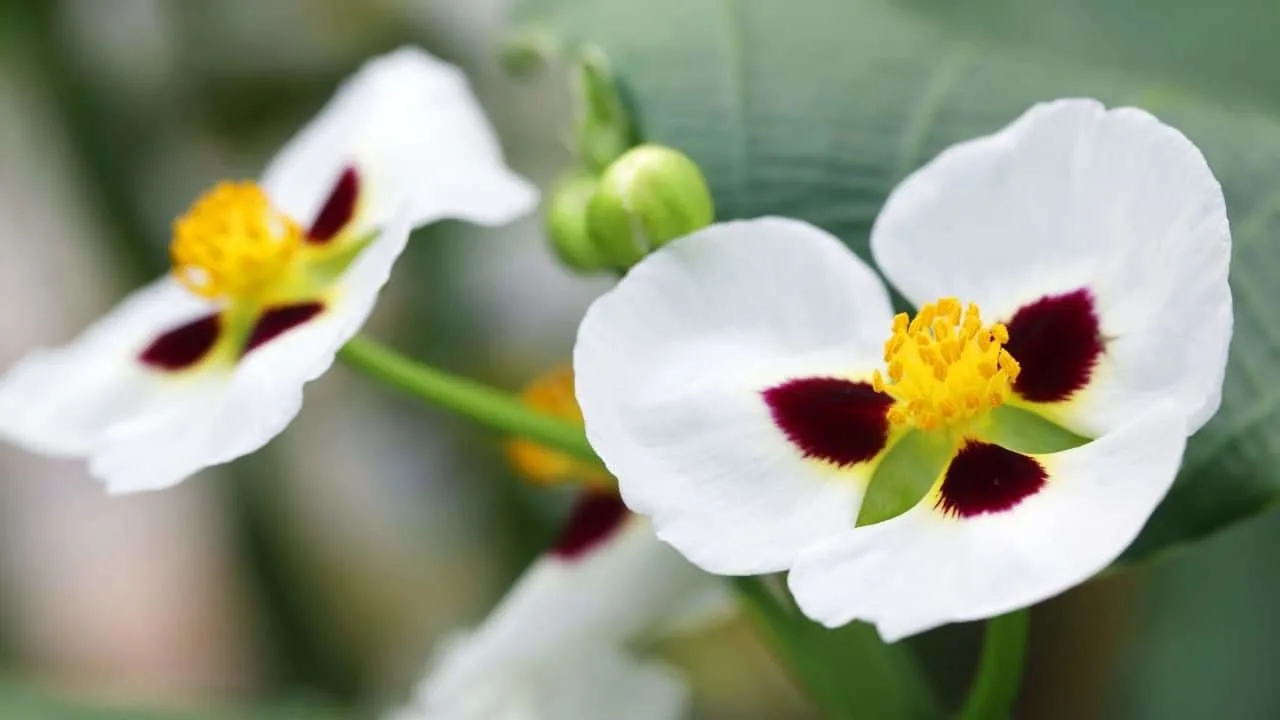
The Amazon Sword plant hails from the Amazon rainforest. It is botanically known as Echinodorus sp. and can easily be cut from its parent plants and grown separately in the aquarium.
Requiring moderate light, heat, and high nutrition, its care is relatively easy. When grown in the right condition, it reaches a height of 20 inches (50.8 cm).
If you provide it with adequate light and nutrition, the Amazon Sword plant may even reward you with a flower stalk. This special stem is sent to the surface, where it gives rise to pale white blooms.
If you have the Amazon Sword plant and would like to grow more, worry not. This tropical beauty is self-pollinating and can form new plants on the stem all by itself.
Remember to keep it in nutrient-rich substrates to encourage fast growth. For the healthiest growth, give it plenty of light and high-quality feeds.
- Scientific name: Echinodorus sp
- Common name: Amazon Sword plant
- Light requirements: moderate
- Nutrition: high
- Growth rate: moderate
- Care: moderate
- Carbon dioxide supplements: optional
Banana Plant
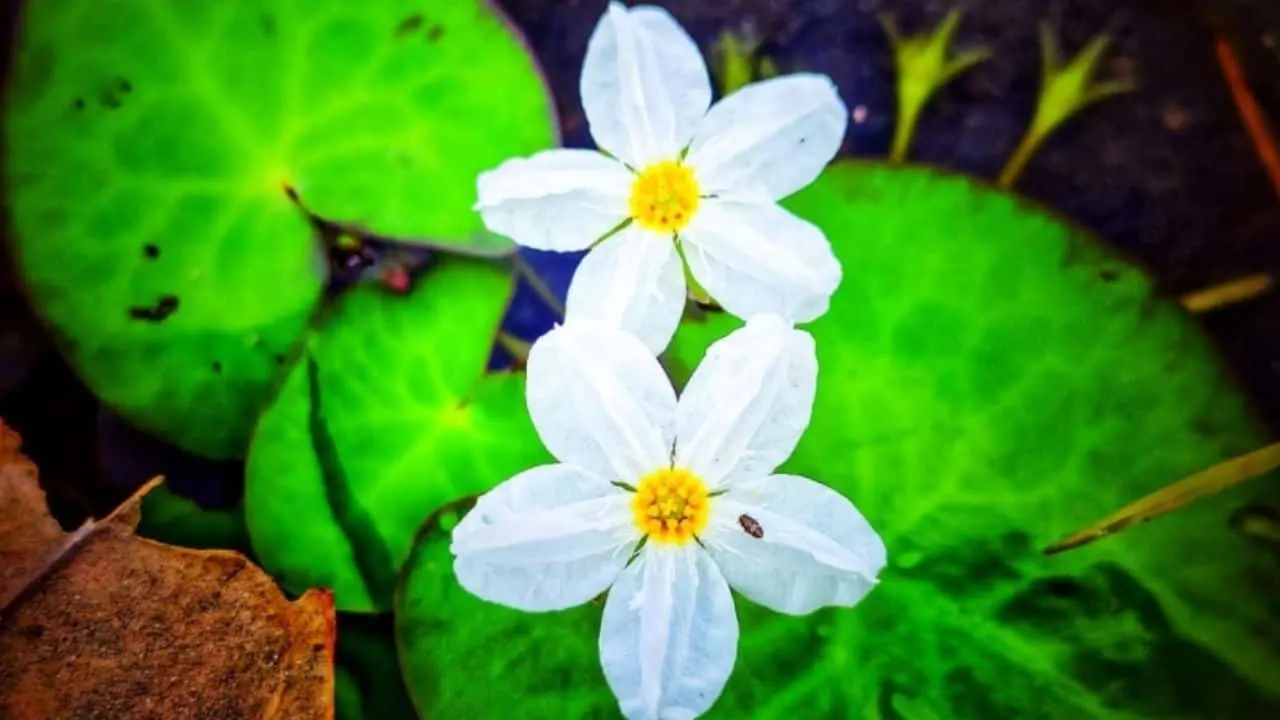
Photo Credit: @devang_click on Instagram!
Scientifically known as Nymphiodes Aquatica, the banana plant grows excellently in a water tank.
Its species, including Banana lily and Fairly lily, are the ones most suited to aquatic environments. As they are easy to grow, you will see them in several fish aquariums.
The banana plant arises from North America; therefore, it needs moderate to high sunlight levels.
It reaches a height of 24 inches (60.9 cm) when kept in moderate humidity and fed moderately. The banana plant produces delicate white flowers that emerge on the surface via a long stem.
Like all lilies, the banana plant sends its leaves up to the surface. This way, they absorb all the light and carbon dioxide they need instead of filtering it through the tank water.
Once exposed to the open air, insects like bees can spread the plant’s pollen to nearby banana plants.
The plant gets its name from the root nodules that grow along its base; these nodules resemble small green bananas.
However, they’re actually the plant’s nutrient chambers for it survive the harsh winter season.
When planting, ensure that you do not bury the nodules, as this will lead to rotting, which eventually kills the plant.
- Scientific name: Nymphiodes Aquatica
- Common name: Banana plant
- Light requirements: moderate to high
- Nutrition: moderate
- Growth rate: moderate
- Care: easy
- Carbon dioxide supplements: optional
Bucephalandra
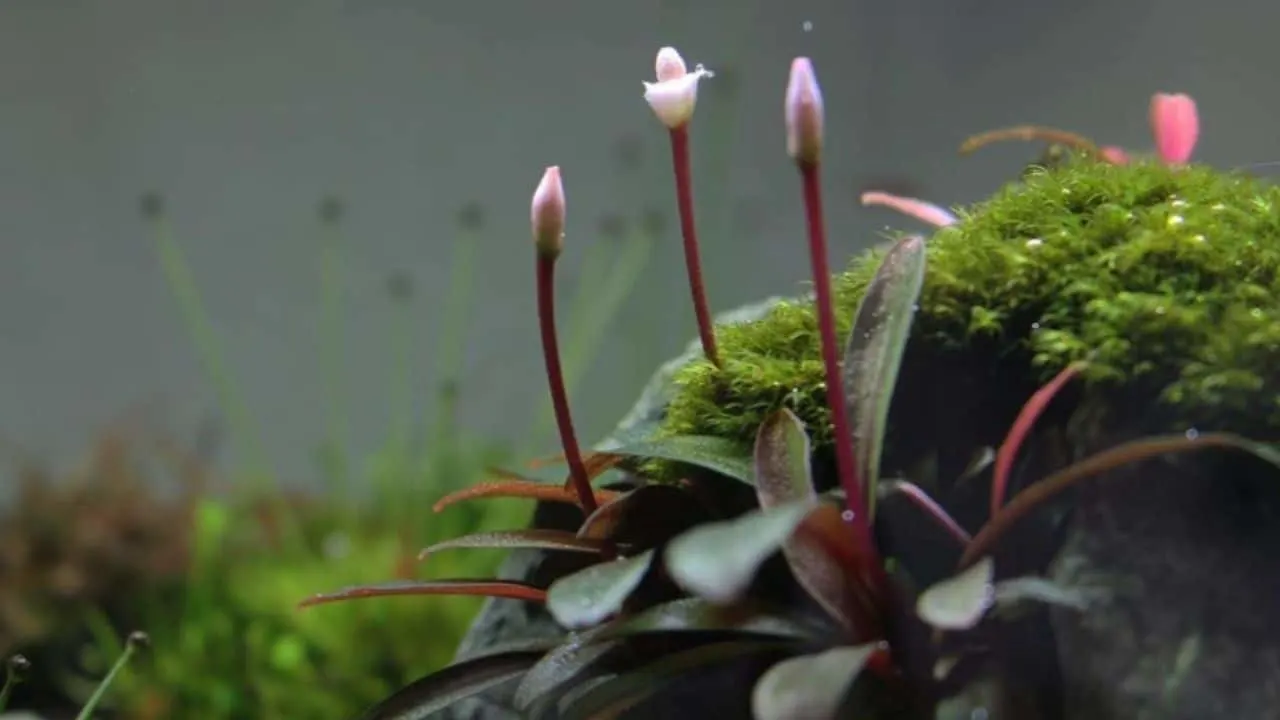
Photo Credit: @touris_aquarium on Instagram!
Another interesting plant is the Bucephalandra, botanically known as Bucephalandra sp.
It originates from Indonesia, where it thrives under low light and infrequent feeding. The aquatic Bucephalandra requires dappled light and low nutrition.
This plant is reasonably easy to care for, attaining a height of 2 to 8 inches (5 to 20 cm) when fully mature.
The Bucephalandra plants are slow-growing epiphytes that often attach to driftwood and shaded rocks.
In the mountain streams, they actively develop in the splash zone. Thus, you can grow them in as well as out of water.
Cousins of the Anubias, Bucephalandra are plants you may consider as ‘set and forget.’
However, the plant thrives in high carbon dioxide; therefore, place it close to a carbon dioxide source to prevent stunting.
Apart from the open air, you can make an inexpensive yeast-based DIY carbon dioxide system. Moreover, products such as Seachem Excel can be excellent liquid carbon agents.
The Bucephalandra plants are slow-growers; their flower stalk takes many days to reach the surface, even in the ideal settings.
Furthermore, it may decay if the plant is submerged too deep or placed in insufficient carbon dioxide.
- Scientific name: Bucephalandra sp.
- Common name: Bucephalandra
- Light requirements: low
- Nutrition: low
- Growth rate: slow to moderate
- Care: moderate
- Carbon dioxide supplementation: preferred
Cryptocoryne

Hailing from South Asia, the Cryptocoryne is a very easy plant to grow. The plant can easily live in and out of the water, requiring low light levels, moderate humidity, and limited feedings.
The Cryptocoryne grows exceptionally well alongside Paludarium. If you are lucky enough, you may even see a single flower shooting up to the water’s surface.
Known for their resilient nature and curly dark foliage, the Cryptocoryne are great plants for beginners. Easy on the pocket, they need little fertilizer and carbon dioxide.
The Cryptocoryne plants develop at an almost glacial pace without the essentials, requiring several months to establish and fill in the new stems and leaves fully.
They grow better towards the surface, especially if you want them to flower. In their native lands, the Cryptocoryne gives rise to flowers at water level during the seasonal variations.
Once the drier seasons begin, the Cryptocoryne plants switch to the reproducing mode, forming white flowers.
- Scientific name: Myrioblastus Wall
- Common name: Cryptocoryne
- Light requirements: low
- Nutrition: low
- Growth rate: slow
- Care: easy
- Carbon dioxide supplements: optional
Cabomba
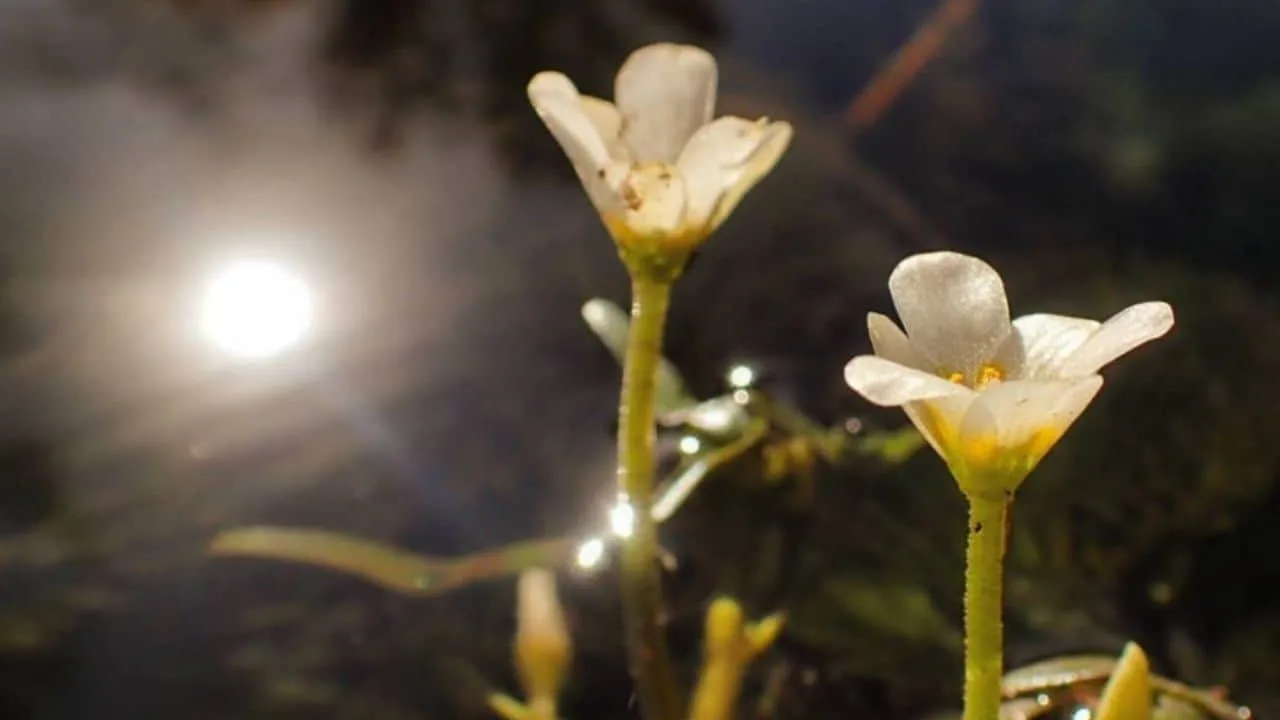
Photo Credit: @reneperezart on Instagram!
Botanically known as Cabomba sp., this plant is found worldwide, from the southern to the northern regions.
Requiring high light levels and moderate nutrition, the Cabomba plant attains a height of 20 inches (50.8 cm) when fully mature.
As the plant is available throughout the globe, it is commonly found in water tanks in several houses, restaurants, and offices.
They give rise to tiny, beautiful flowers that form a beautiful sight against the dull aquarium backgrounds.
You can easily take care of these plants, which typically flower when the stems reach the surface. Once there, the plant sprawls across the entire area.
If you allow your Cabomba plant flower to float, it will most likely flourish close to the surface.
The Cabomba plant has flowers very similar to terrestrial plants. They have variations between pink, purple, and white, depending on what variety and species you have.
Moreover, the blooms have a decent scent and nectar, the latter enticing insects like bees to visit and deposit their pollen.
Preferably, these flowers remain above water, but the lower parts are submerged and stay there throughout the year.
- Scientific name: Cabomba sp.
- Common name: Cabomba
- Light requirements: high
- Nutrition: moderate
- Growth rate: moderate
- Care: moderate
- Carbon dioxide supplements: optional
Aponogeton

The scientific name of this plant is Aponogeton sp., and it is found naturally in Asia, Africa, and Australia.
When fully mature, the Aponogeton reaches 8 to 30 inches (20 to 76 cm). The plant thrives in low to moderate light, moderate humidity, and low to moderate feeding.
The Aponogeton plants are another great option for inexperienced aquatic plant growers. With typically wavy or crinkled leaves, the foliage develops shades of bright to dark green.
One of its Madagascar species, the Aponogeton madagascariensis with skeletal leaves, is one of the finest display plants.
The Aponogeton will bloom in most settings as long as it is given adequate lighting and ample nutrients.
When it comes to carbon dioxide levels, keep them low but do not completely eliminate them (except madagascariensis).
The plants are self-fertilizing; thus, you do not need to worry about their pollination.
- Scientific name: Aponogeton sp.
- Common name: Aponogeton
- Light requirements: low to moderate
- Nutrition: low to moderate
- Growth rate: low to moderate
- Care: Moderate
- Carbon dioxide supplements: optional
Red Tiger Lotus

Photo Credit: @sato_vida on Instagram!
With a unique scientific name, Nymphaea Zenkeri, you can quite easily take care of the Red Tiger Lotus. When fully grown, it measures about 20 inches (50.8 cm).
With high light levels and moderate nutrition, the plant grows the healthiest.
Red Tiger Lotus is a gorgeous aquatic flowering plant, but all it needs is a little space. The red leaves may spread to about 8 inches in width (20.3 cm).
A true lily, the Red Tiger Lotus produces showy, star-like lily blooms that are usually blue, white, or red.
Additionally, these flowers float along the water surface right beside their lily pads, inviting swarms of bees for pollination.
Those who enjoy this plant’s flowers, make sure to periodically trim them, as they often block light for the plants close-by or underneath.
The occasional trimming also promotes flowering for weeks. The untrimmed plants wilt or go produce seeds.
- Scientific name: Nymphaea Zenkeri
- Common name: Red Tiger Lotus
- Light requirements: high
- Nutrition: moderate
- Growth rate: moderate
- Care: moderate
- Carbon dioxide supplements: optional
Giant Hygrophila
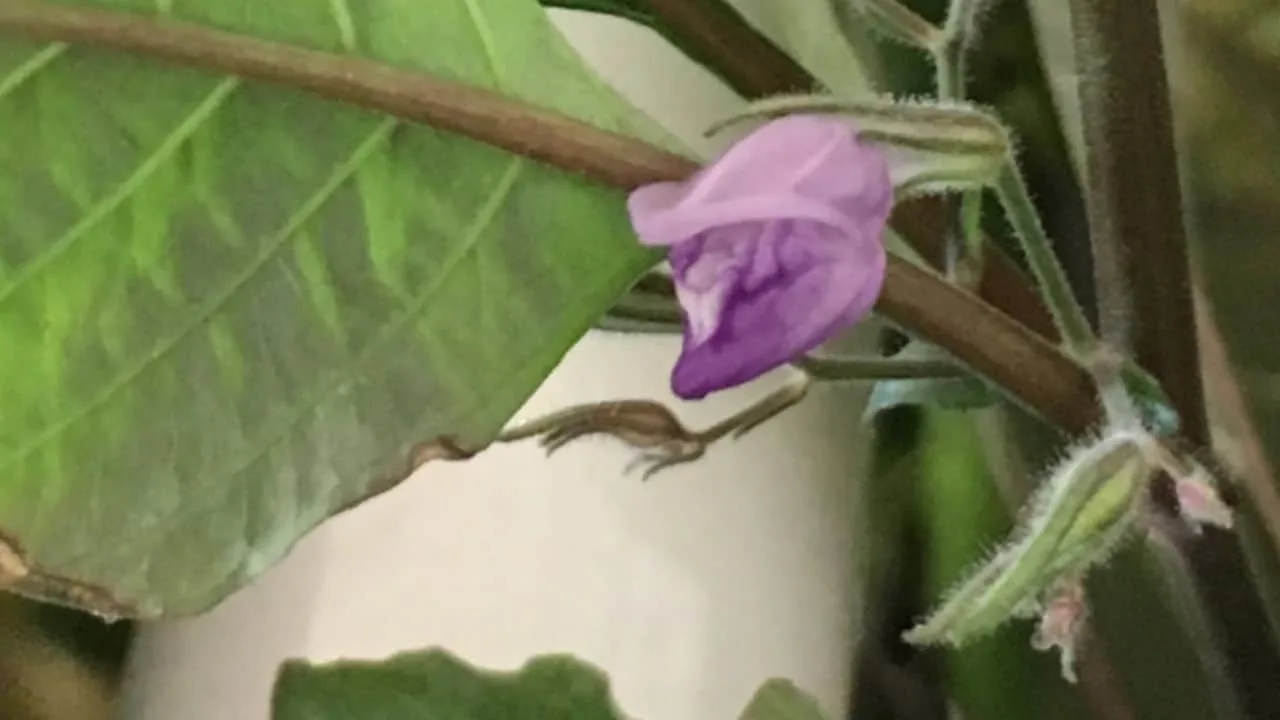
Photo Credit: @babouketie on Instagram!
Another wonderful flowering aquarium plant is the Giant Hyrophila, scientifically known as Hygrophila corymbosa.
Originating from Southeast Asia, it is easy to grow and look after. It requires light levels that are moderate to high and frequent feeding. Moreover, at maturity, it grows to about 24 inches (60.9 cm).
The Hyrophila are fast-growing, nutrient-hungry swamp plants that are pretty common.
The Giant Hyrophila particularly is large, spreading up to 8 to 12 inches (20.3 to 30.4 cm). They are excellent space-filling background plants that look attractive and are easy to maintain.
To encourage blooming, allow the Giant Hyrophila to grow all the way out of the aquarium. After all, the plant is a swamp weed that prefers its feet to remain wet and head dry.
Once it breaks the surface, Giant Hyrophila starts producing small purple flowers with a delightful fragrance.
All the Giant Hyrophila need is ample light; otherwise, they are undemanding plants. Moreover, they appreciate carbon dioxide and good-quality fertilizer but can manage without both.
However, if you let them grow out of the water tank, you will definitely see better and healthier growth.
- Scientific name: Hygrophila corymbosa
- Common name: Giant Hyrophila
- Light requirements: moderate to high
- Nutrition: moderate
- Growth rate: moderate to high
- Care: moderate
- Carbon dioxide supplements: optional
Conclusion
Each of these makes a wonderful aquarium flower plant. They are easy to grow, requiring low to moderate light and feedings.
Apart from the care mentioned above, I suggest installing cleaning devices in your tank and using high-quality fertilizers with a good NPK ratio (especially phosphate).
Add carbon dioxide supplements or injections (if required) and occasionally trim large plants to prevent them from blocking light for neighboring plants.

Daniel has been a plant enthusiast for over 20 years. He owns hundreds of houseplants and prepares for the chili growing seasons yearly with great anticipation. His favorite plants are plant species in the Araceae family, such as Monstera, Philodendron, and Anthurium. He also loves gardening and is growing hot peppers, tomatoes, and many more vegetables.

